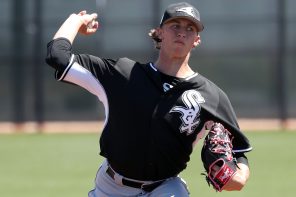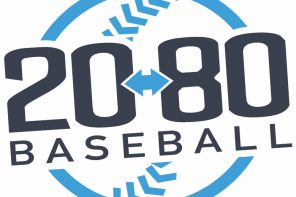Mark Appel
 |
|
Ed. Note: Our eyes and ears in the International League, Chaz Fiorino, recently filed a prospect spotlight on Appel after his start against Pawtucket on April 23rd. Dave Defreitas, our scout out West, was able to catch a view of Appel since then, reviewing his May 11th start on video to see how he was progressing. Here’s Dave’s take: 05-11-16: Appel’s professional career has been well documented since being taken #1 overall in the 2013 MLB Draft by Houston. His struggles with consistency have been well documented as well, and he was thrust back into the spotlight this past offseason when he was a key component acquired by the Phillies, along with Vincent Velasquez, in the Ken Giles deal with the Astros on December 12, 2015. Appel has been decent thus far in 2016 for the IronPigs, but he has continued to struggle his fastball command, and it’s something that’s preventing him from pitching deep into ball games. In his five starts up to May 11th, Appel has needed 90+ pitches to get through five-plus innings three times, and he’s only completed the 6th frame once. His outing Wednesday, May 11th was more of the same, needing 93 pitches to complete five innings in a 10-2 loss to the Columbus Clippers. While Appel’s defense really hurt him in this one, with two errors leading to three unearned runs in the second inning, he did little to help himself. There is a lot to like with Appel and his easy delivery and arm action. He can create great angle and dial up late life on his fastball, but his command of the pitch remains below average. In this look, he struggled to consistently locate it to either side, and he would miss up and over the plate often, which could be the culprit for the consistently high hit totals he’s giving up this year (33 hits in 32 IP). While the delivery is easy, he does have some moving parts, and it looks like he has trouble finding that good rhythm and repeating his release point. The fastball stays flat and hittable when up, and while he showed the makings of two above-average breaking balls, his feel for the pitch comes and goes. He worked from behind in the count through the first three innings, and hitters were able to spit on his breaking ball while his pitch count climbed, but he found some feel in the fourth and fifth innings, showing solid depth and bite, and started getting some swing and miss. Appel’s BB/9 through his first few seasons continues to trend in the wrong direction (2.6, 3.5 and 3.9 from 2014-16) and his ability to generate swings and misses hovers around average to just above in K/9 (8.4, 7.5, 7.9 from 2014-16). Not the dominating K/9 ratio that Houston probably expected to see after drafting him, but solid…and numbers that would look a lot better if he can command the fastball, work more from ahead in the count, and limit his base runners. Overall, the ingredients are there for him to impact a big league rotation, and you can see why everyone was so high on this guy going into the draft. His raw stuff alone should give him some margin for error, but ultimately his fastball command will have to get to average for him to fulfill his potential as a starter. Luke Hochevar (RHP, Dodgers) comes to mind as a comparable player- another former #1 overall pick by Kansas City in 2006 – to struggle as a starting pitcher. Hochevar found some consistency and swing and miss in a relief role, however, and has been one of the better late-inning guys in the majors the past few seasons.Andrew Miller (LHP, Yankees) also compares in that regard. Will Appel go that direction? It’s still a bit early to go down that road, but it is something to keep in mind, should his struggles continue over the next season or two. – Dave DeFreitas |



